Online programmatic advertising is bravely marching onto the traditional TV scene. Who could have guessed that's gonna be a reality for the advertising industry a couple of years ago?
Apparently, ESPN could. At the beginning of 2015, the channel officially started broadcasting the advertisements to the TV audience using the real-time auction instead of sticking to the familiar but slow direct TV ad buying methods over email or phone.
Programmatic TV ads have a great future because television has not died; it evolutionized. Every year users consume large amounts of video content. The thing that really changed is that TV audiences watch their favorite shows anytime and everywhere they want on their favorite devices.
PTV will trigger massive changes in the TV advertising market as participants will have to completely reinvent the approach to price formation and ad placement.
So, let's see how exactly upcoming changes will modify connected TV ad buying in the nearest future and what benefits programmatic advertising TV keeps up its sleeve.

What is programmatic TV advertising?
Programmatic TV buying (PTV) represents a programmatic platform that enables the launching of programmatic ad campaigns while broadcasting TV, including programmatic advertising on linear, connected, and addressable TV.
The main feature of PTV is that it can target an audience while linear advertising can't.
Linear TV
An umbrella term that includes all kinds of live, real-time broadcasting television. Traditional television operates on traditional automated TV buying platforms that utilize standard ad performance metrics.
Linear TV ads include traditional TV media buying.
While with connected TV advertising, programmatic ad buying automates the process of delivering ads, linear TV ads served manually — marketers are determining the TV programming schedule of when it's better to serve ads.
This becomes possible thanks to real-time bidding.
With programmatic TV ads, brands and marketers can also target audience.
Connected TV
Connected TV is enabled by the Internet — users connect to it using consoles, streaming boxes, devices, or Smart TV. Thanks to streaming platforms, users watch the content on their Smart TVs and other gadgets when they want.
Apart from connected TVs, such TV content can be streamed on mobile devices — e.g, users can watch Apple TV inside of the apps. Thus, brands can also target audiences on many channels.
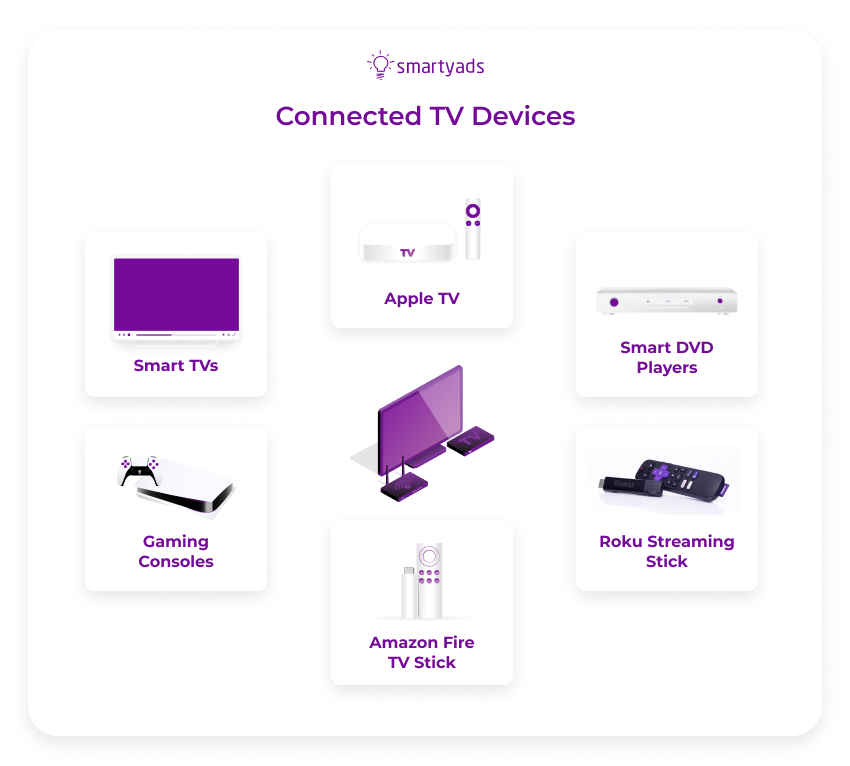
Thanks to the Internet connection, serving targeted TV ads becomes possible, so media buyers can benefit from it.
With this, brands are displaying ads in a personalized manner to every user — artificial intelligence and machine learning enable data-driven targeting.
Thanks to this, media buyers can hit the right audiences at the right time and screen. With this approach, marketers don't overspend on irrelevant impressions, and thus, they easily achieve their marketing objectives.
Unlike linear, connected TV makes it possible to measure the ad completion and delivery and serve various ads depending on the household.
Here you can find what is connected TV — How Connected TV Advertising is transforming the TV Industry.
Addressable TV
Providers of addressable TV serve different ads to different households while broadcasting the same shows to various audiences. Technically, this is a container for programmatic television advertising.
Real-time targeting is what sets the distinctive line between these two kinds. Programmatic companies deliver data-driven software that facilitates the process of ad buying, planning, optimizing, and ad serving.
Such planning gives insights considering connected TV networks, shows, and timing that makes a TV addressable, so there's no need to target by household.
PTV is contextual, while addressable TV collaborates with cable networks or TV distributors to get access to certain households.
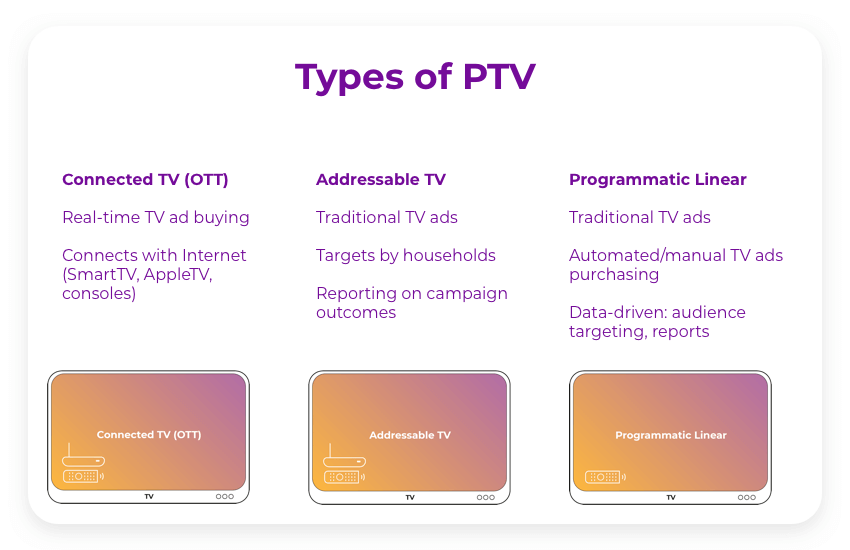
Advertising on programmatic TV: how it works
How does PTV advertising work when we talk about every single taken platform for programmatic buying?
The core of the automated ad placement system inside PTV is a programmatic technology that enables any TV to buy inside one unifying platform for all channels.
The data-driven technology of programmatic buying allows advertisers to bid on the TV impressions in real time and let the higher bid define whose ad will be shown while broadcasting takes place.
The information about users, including their lifestyle, personal preferences, financial situation, or any other indicator used in programmatic ad targeting, will be available for tuning in the system.
With PTV advertising, there will be absolutely no need for manual program selection sifting through possibly appropriate shows; programmatic ads will be served once the TV audience matching the targeting options watches the TV.
Here's how PTV advertising looks on Smart TVs screens: a small personalized ad unit pops up on the TV screen or at the sidebar, and the user is free to click on it or leave it as it is until it disappears.
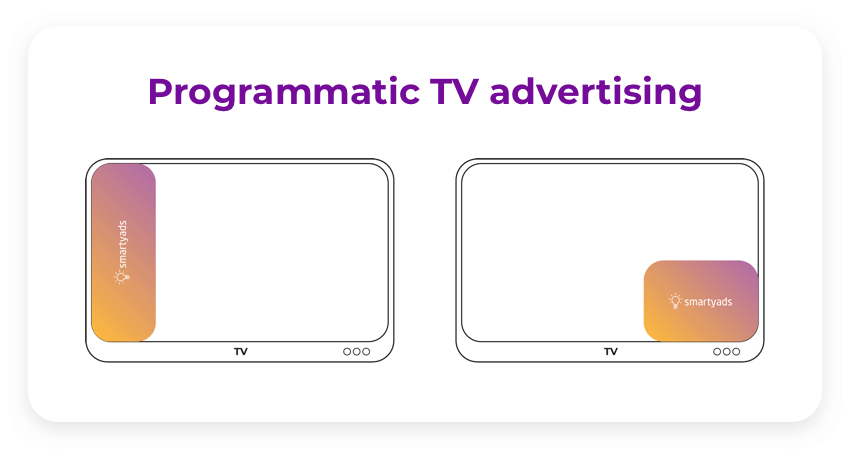
Advertisers often prefer programmatic TV buying algorithms because of their data-driven unified ad campaign management and real-time targeting that allows them to optimize campaigns and buy relevant audiences instead of making blind choices.

Programmatic TV: steady trends
Online programmatic advertising for TV represents a new media buying method for apparently old, rusty, and completely different television advertising schemes.
This comes off as a novelty, opportunity, and the main challenge at the same time because the programmatic buying ecosystem is completely different from the one innate to traditional TV.
Programmatic television advertising spending in the United States only in 2021 reached 6 billion dollars, and in the future, this number is expected to grow.
Meanwhile, the global TV advertising market opportunities are booming too — according to the forecast, the market size will reach $93.74 billion by 2025.
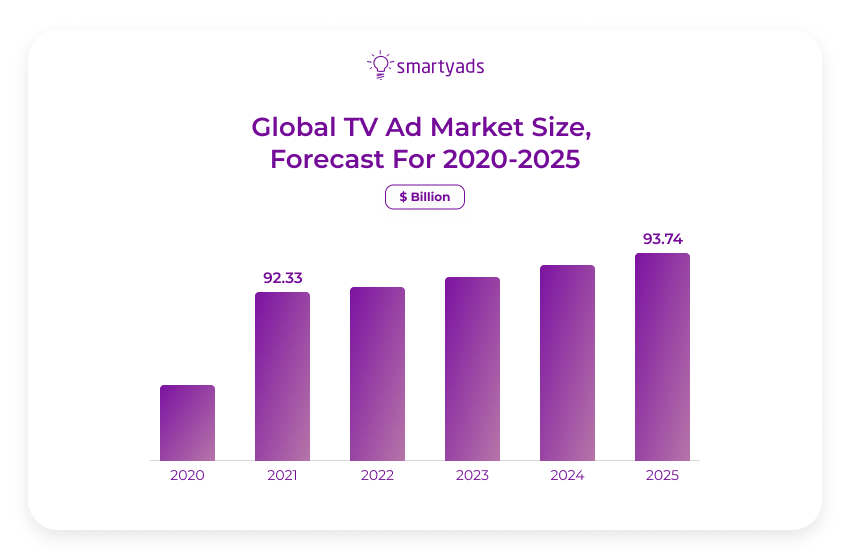
Accordingly, the number of programmatic TV vendors will also increase over time.
The early adopters of PTV buying can take full advantage of the situation and penetrate an uncharted TV audience market with minimum efforts brought into competition and achieve better results with advantages that ads on PTV have to offer:
Audience-based targeting
Audience-based targeting is the first and foremost. Through the programmatic buying platform, the advertisers can access selected demographics and serve the ad messages with a more precise, narrow focus.
Advertising automation
Before programmatic TV, ads were bought manually; this involved a lot of time spent on negotiations and caused ad budget wasting due to the wrongly picked timing, show, or channel.
Selling remnant inventory
Small blocks that belong to the premium inventory are among those items that frequently end up unsold. Programmatic TV advertising is not only able to save the day but also helps to achieve higher CPM, according to Think with Google reports.
Regaining the audience
The ratings of the TV shows continue to drop every year, as well as overall TV revenues that failed to reach the worst-case scenario rate last year. This situation pushed publishers and advertisers to turn to cross-platform programmatic TV.
Ad spending analysis
The former manual process of buying and selling inventory didn't provide an analysis for the advertisers on whether their ad budgets were spent effectively. Programmatic TV platforms have essential functionality in-build for media planning, statistics, and analytics.
Why programmatic TV is the future?
Ineffective ad spending is the greatest fear of every advertiser or media owner who is standing on the threshold of trying new technology.
Nevertheless, in the nearest future, reaching a young TV audience without programmatic TV advertising will be borderline impossible because generations consume television differently.
Traditional TV is rapidly losing ratings every year, so whoever you will be trying to reach using conventional ad placement methods, the audience will be drifting further away.
How to buy programmatic TV advertising? The key is to select the right partner among programmatic TV vendors. Typically, those will offer advertising on platforms like DSP or ad exchanges.
Programmatic CTV formats that capture consumer attention
As industry experts, we can say that video is so far the most popular format used by programmatic media buyers and marketers. There are several reasons for that.
For starters, video is pretty universal these days. The viewers are watching their favorite shows that all have the form of video content.
Thus, placing the video ad in the video content appears more natural to the eye than a banner ad.
Right, CTV advertising is video-driven, as ad spots are perfectly adjusted to such an experience. On CTV, advertisers can send the right message to the right user inside of the premium content, which is also important.
There are also interactive programmatic formats that enable the viewers to connect with ads on various platforms and channels.
For example, this way, cord-cutters can scan the QR codes and get redirected to the landing page.
The reward can also be the right ad format for programmatic CTV. For example, as soon as the user watches the advertising video till the end, they get a reward in a certain game on CTV.
As mentioned earlier, these formats are the most popular these days on the programmatic CTV scene; however, there are also lots of other formats that advertisers can easily benefit from.
To sum up
More and more people are getting accustomed to their favorite media channels and technology for content streaming, with no indication of this trend changing in the future.
This fundamental change is the reason why advertising on programmatic TV advertising platforms appears to be a single gateway to formerly unavailable TV audiences or audiences that will completely vanish from traditional TV media tomorrow.
Understanding current programmatic TV advertising trends, SmartyAds is already preparing to launch its own programmatic TV solution that will help advertisers to master the new programmatic buying niche easily, reducing advertising costs and increasing every ad impression efficiency.
So far, every publisher can monetize their ad inventory programmatically via our SSP, and advertisers can set their individual deep criteria for audience targeting, getting better revenues from SmartyAds DSP.
If you strive to extend a video campaign across media platforms, launch programmatic ads on SmartyAds DSP!

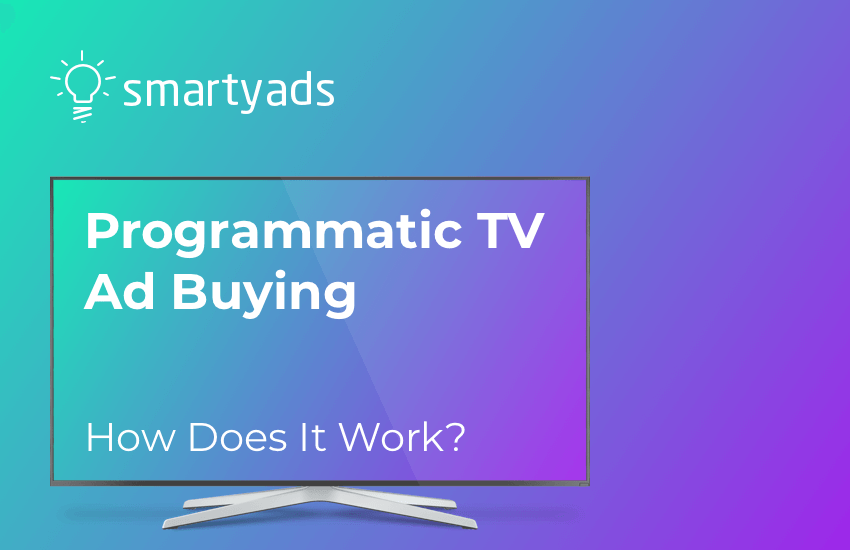
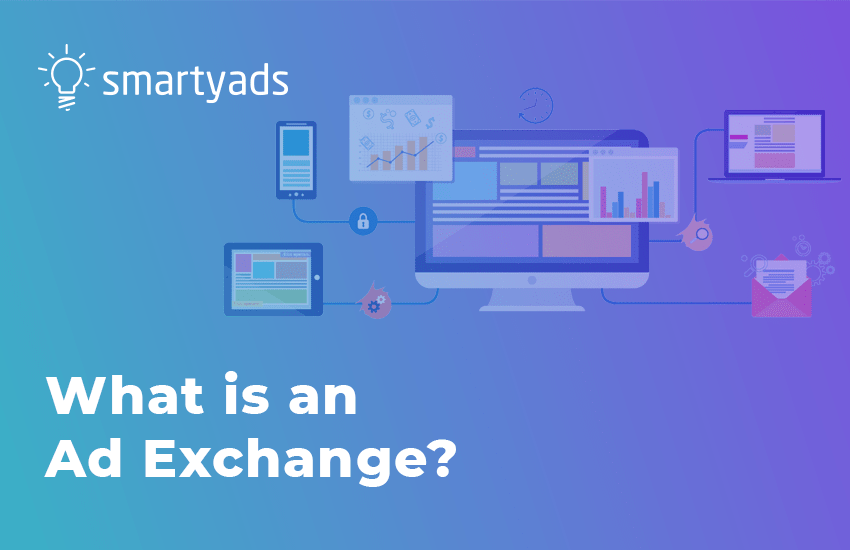
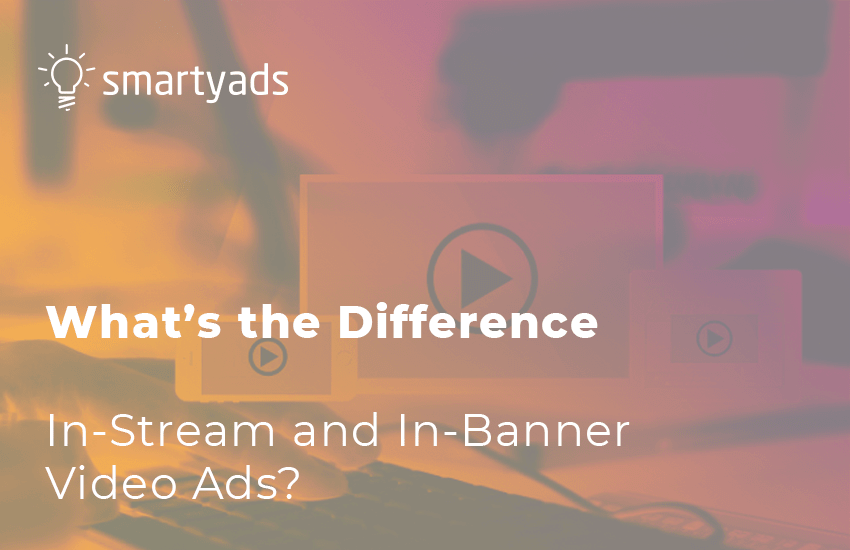
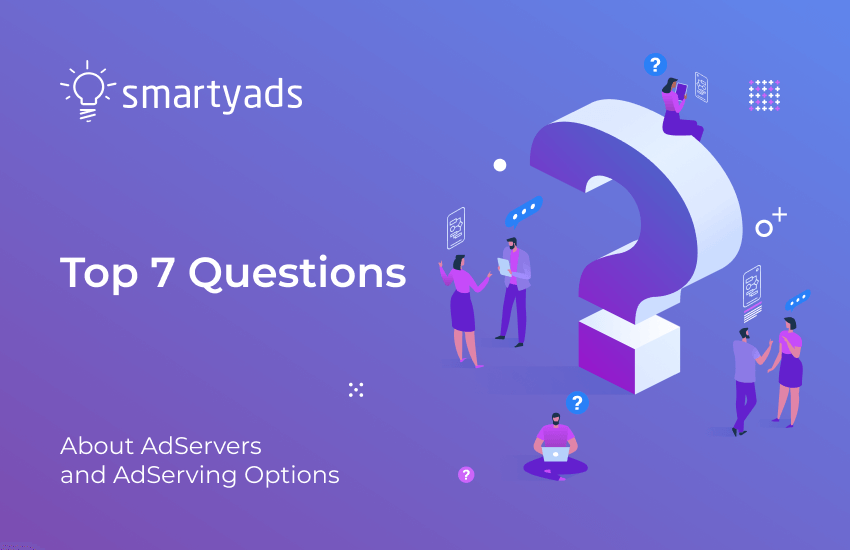
![In-App Advertising: the Complete Guide [Updated 2024]](/storage/uploads/2020/september/in-app-advertising-trends.png)